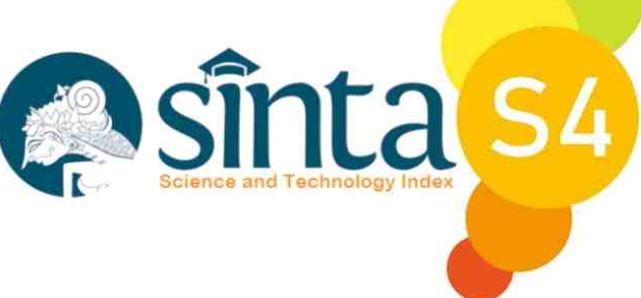ADAPTASI EUDAIMONIC WORKPLACE WELL-BEING SCALE (EWWS) VERSI INDONESIA
 ), Ali Mubarak(2),
), Ali Mubarak(2), (1) Fakultas Psikologi dan Kesehatan Universitas Negeri Padang
(2) Fakultas Psikologi Universitas Islam Bandung
 Corresponding Author
Corresponding Author
Copyright (c) 2022 Tuti Rahmi, Ali Mubarak
DOI : https://doi.org/10.24036/rapun.v13i2.117090
Full Text:
 Language : en
Language : en
Abstract
Keywords
References
Bartels, A. L., Peterson, S. J., & Reina, C. S. (2019). Understanding well-being at work: Development and validation of the eudaimonic workplace well-being scale. PLOS ONE, 14(4), e0215957. https://doi.org/10.1371/journal.pone.0215957
Caesens, G., Stinglhamber, F., & Luypaert, G. (2014). The impact of work engagement and workaholism on well-being-the role of work-related social support. Career Development International, 19(7), 813–835. https://doi.org/10.1108/CDI-09-2013-0114
Cohen, S. (1986). Contrasting the Hassles Scale and the Perceived Stress Scale. Who’s Really Measuring Appraised Stress? American Psychologist, 41(6), 716–718. https://doi.org/10.1037/0003-066X.41.6.716
Cotton, P., & Hart, P. M. (2003). Occupational wellbeing and performance: A review of organisational health research. Australian Psychologist, 38(2), 118–127. https://doi.org/10.1080/00050060310001707117
Culbertson, S. S., Fullagar, C. J., & Mills, M. J. (2010). Feeling good and doing great: The relationship between psychological capital and well-being. Journal of Occupational Health Psychology, 15(4), 421–433. https://doi.org/10.1037/a0020720
der Kinderen, S., & Khapova, S. N. (2020). Positive Psychological Well-Being at Work: The Role of Eudaimonia. In The Palgrave Handbook of Workplace Well-Being (pp. 1–28). Springer International Publishing. https://doi.org/10.1007/978-3-030-02470-3_79-1
Elovainio, M., Heponiemi, T., Kuusio, H., Jokela, M., Aalto, A.-M., Pekkarinen, L., Noro, A., Finne-Soveri, H., Kivimaki, M., & Sinervo, T. (2015). Job demands and job strain as risk factors for employee wellbeing in elderly care: an instrumental-variables analysis. The European Journal of Public Health, 25(1), 103–108. https://doi.org/10.1093/eurpub/cku115
Huta, V., & Waterman, A. S. (2014). Eudaimonia and Its Distinction from Hedonia: Developing a Classification and Terminology for Understanding Conceptual and Operational Definitions. Journal of Happiness Studies, 15(6), 1425–1456. https://doi.org/10.1007/s10902-013-9485-0
Keeman, A., Näswall, K., Malinen, S., & Kuntz, J. (2017). Employee Wellbeing: Evaluating a Wellbeing Intervention in Two Settings. Frontiers in Psychology, 8. https://doi.org/10.3389/fpsyg.2017.00505
Nielsen, K., Nielsen, M. B., Ogbonnaya, C., Känsälä, M., Saari, E., & Isaksson, K. (2017). Workplace resources to improve both employee well-being and performance: A systematic review and meta-analysis. Work & Stress, 31(2), 101–120. https://doi.org/10.1080/02678373.2017.1304463
Page, K. M., & Vella-Brodrick, D. A. (2009). The ‘What’, ‘Why’ and ‘How’ of Employee Well-Being: A New Model. Social Indicators Research, 90(3), 441–458. https://doi.org/10.1007/s11205-008-9270-3
Rahmadani, V. G., Schaufeli, W. B., Ivanova, T. Y., & Osin, E. N. (2019). Basic psychological need satisfaction mediates the relationship between engaging leadership and work engagement: A cross-national study. Human Resource Development Quarterly. https://doi.org/10.1002/hrdq.21366
Ryan, R. M., Huta, V., & Deci, E. L. (2008). Living well: a self-determination theory perspective on eudaimonia. Journal of Happiness Studies, 9(1), 139–170. https://doi.org/10.1007/s10902-006-9023-4
Saraswati, K. D. H. (2017). Perilaku Kerja, Perceived Stress, dan Social Support pada Mahasiswa Internship. Jurnal Muara Ilmu Sosial, Humaniora, Dan Seni, 1(1), 216. https://doi.org/10.24912/jmishumsen.v1i1.352
Shimazu, A., Schaufeli, W. B., Kamiyama, K., & Kawakami, N. (2015). Workaholism vs. Work Engagement: the Two Different Predictors of Future Well-being and Performance. International Journal of Behavioral Medicine, 22(1), 18–23. https://doi.org/10.1007/s12529-014-9410-x
Shimazu, A., Schaufeli, W. B., Kubota, K., & Kawakami, N. (2012). Do workaholism and work engagement predict employee well-being and performance in opposite directions? Industrial Health, 50(4), 316–321. https://doi.org/10.2486/indhealth.MS1355
Straume, L. V., & Vittersø, J. (2012). Happiness, inspiration and the fully functioning person: Separating hedonic and eudaimonic well-being in the workplace. The Journal of Positive Psychology, 7(5), 387–398. https://doi.org/10.1080/17439760.2012.711348
Waterman, A. S. (1993). Two conceptions of happiness: Contrasts of personal expressiveness (eudaimonia) and hedonic enjoyment. Journal of Personality and Social Psychology, 64(4), 678–691. https://doi.org/10.1037/0022-3514.64.4.678
 Article Metrics
Article Metrics
 Abstract Views : 1429 times
Abstract Views : 1429 times
 PDF Downloaded : 422 times
PDF Downloaded : 422 times
Refbacks
- There are currently no refbacks.
Copyright (c) 2022 Tuti Rahmi, Ali Mubarak

This work is licensed under a Creative Commons Attribution-NonCommercial 4.0 International License.






